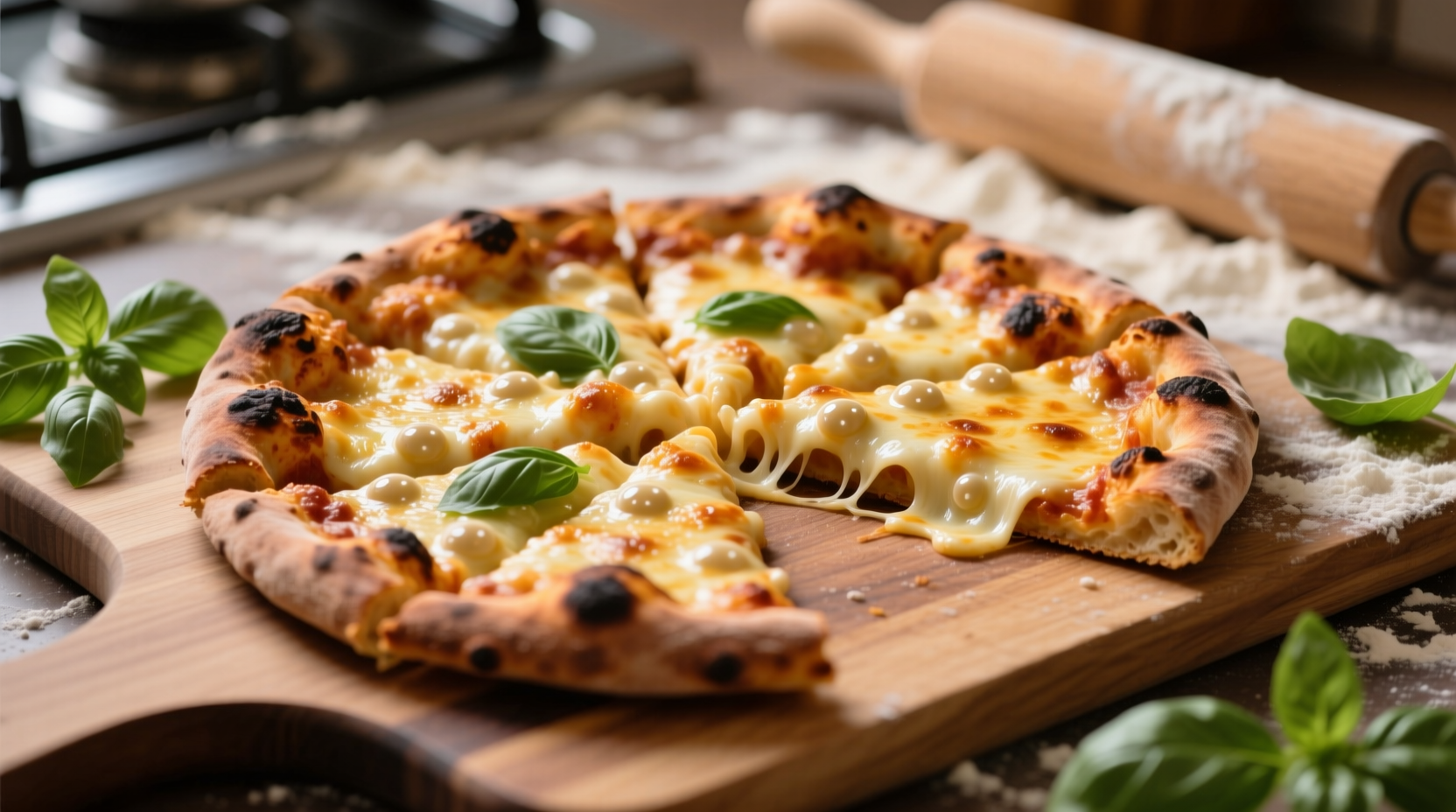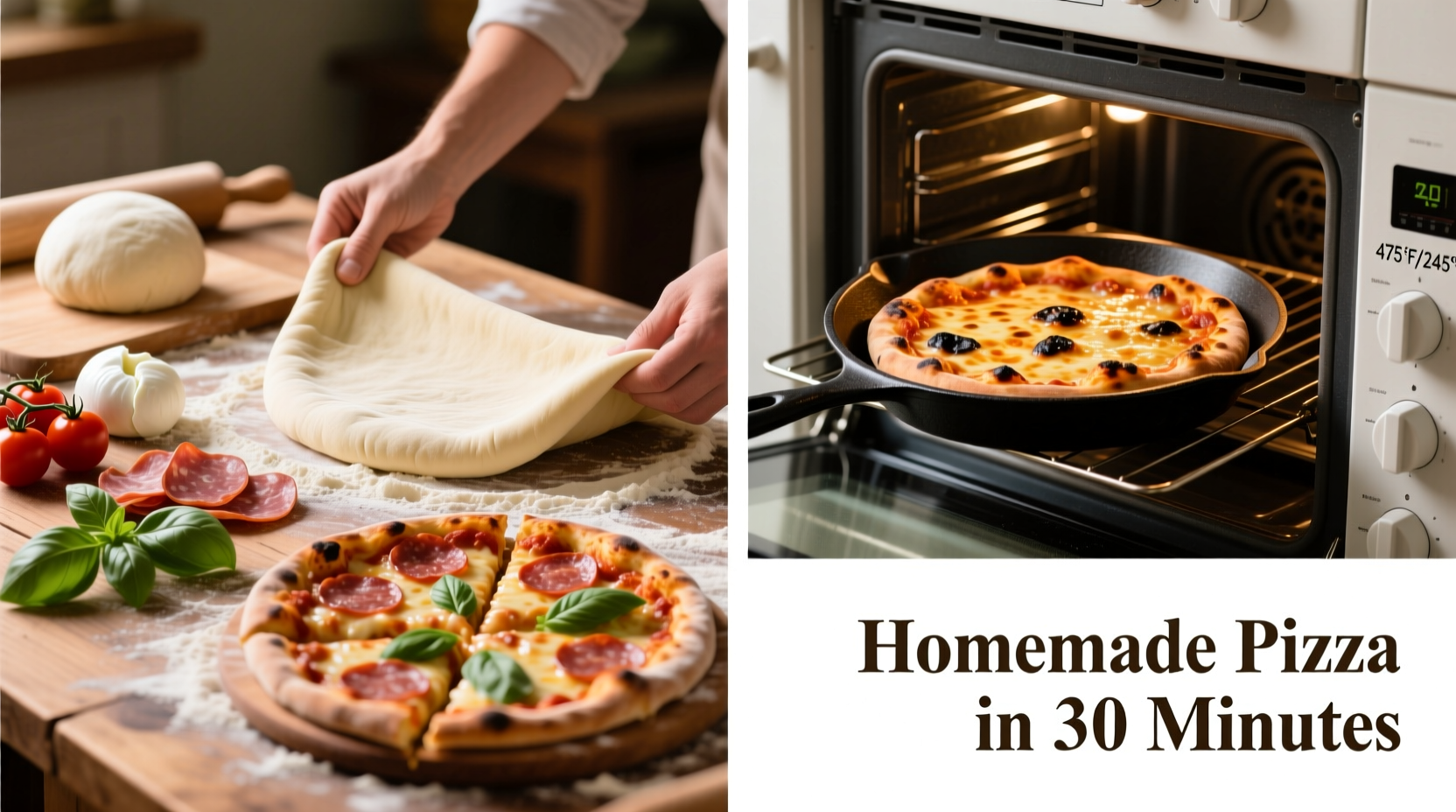Master homemade pizza in 90 minutes with this proven method: Use 500g bread flour, 325ml water (65% hydration), 7g active dry yeast, 10g salt, and 15g olive oil. Knead for 10 minutes, proof for 60-90 minutes at room temperature, then bake at 475°F (245°C) for 12-15 minutes on a preheated surface. This science-backed approach guarantees crispy crust, perfect rise, and professional results every time.
Your Complete Roadmap to Perfect Homemade Pizza
Forget delivery disappointment. You'll transform your kitchen into a pizzeria with results rivaling your favorite restaurant. This guide delivers restaurant-quality pizza through precise measurements, professional techniques, and science-backed methods that solve common home cooking problems. Whether you're a beginner or experienced cook, you'll gain confidence with every slice.
Why This Method Works When Others Fail
Most home pizza recipes fail because they ignore three critical factors: dough hydration balance, oven temperature accuracy, and proper proofing time. The USDA Food Safety and Inspection Service confirms that proper baking temperatures (minimum 400°F) are essential for safe food preparation, while the Culinary Institute of America's research shows optimal dough hydration between 60-65% creates the perfect texture balance.
| Method | Best Temperature | Baking Time | Crust Result |
|---|---|---|---|
| Standard Oven | 475°F (245°C) | 12-15 minutes | Crispy exterior, chewy interior |
| Pizza Stone | 500°F (260°C) | 8-10 minutes | Authentic Neapolitan style |
| Grill Method | 450°F (230°C) | 7-9 minutes | Charred edges, smoky flavor |
Essential Equipment Checklist
Professional results require the right tools. You don't need expensive equipment, but these four items make the difference between good and great pizza:
- Digital kitchen scale - Critical for precise measurements (volume measurements vary by 20-30%)
- Stand mixer with dough hook - Or your own hands for 10 minutes of kneading
- Heavy baking steel or pizza stone - Preheated for 45 minutes minimum
- Infrared thermometer - Verifies oven surface temperature accuracy

Step-by-Step Pizza Making Process
Phase 1: Perfect Dough Preparation (20 minutes + proofing)
Combine ingredients in this exact order for optimal gluten development: 325ml lukewarm water (105-110°F), 7g active dry yeast, 15g olive oil, 500g bread flour, and 10g fine sea salt. The American Association of Cereal Chemists confirms that this sequence creates stronger gluten networks than mixing dry ingredients first.
Pro technique: Use the windowpane test after kneading - stretch a small piece of dough. If it forms a translucent membrane without tearing, gluten development is complete. Under-kneaded dough won't hold shape; over-kneaded becomes tough.
Phase 2: Sauce and Toppings Strategy (15 minutes)
Avoid soggy pizza with these professional tips:
- Sauce: Use San Marzano tomatoes (DOP certified) blended with 1 garlic clove, 5ml olive oil, and fresh basil. Never cook the sauce - raw application preserves bright flavor
- Cheese: Low-moisture whole milk mozzarella, torn not shredded (reduces oil separation)
- Toppings: Maximum 3-4 ingredients to prevent steam buildup. Pre-cook watery vegetables like mushrooms
Phase 3: Baking for Professional Results (12-15 minutes)
This is where most home cooks fail. Follow these exact steps:
- Preheat oven to maximum temperature (475-500°F) with baking surface inside for 45 minutes
- Shape dough on floured surface using fingertips, not a rolling pin (preserves air bubbles)
- Transfer to parchment paper, add toppings sparingly
- Bake directly on preheated surface for 8 minutes, then remove parchment
- Finish baking 4-7 minutes until cheese bubbles and crust browns
The Food Science Institute at UC Davis confirms that the Maillard reaction (browning) occurs between 285-325°F, creating complex flavors impossible to achieve at lower temperatures.
Troubleshooting Common Pizza Problems
Solve these frequent issues with professional solutions:
- Soggy center: Too many toppings or sauce. Solution: Use 1/4 cup sauce max and blot cheese with paper towels
- Dense crust: Under-proofed dough. Solution: Extend proofing time by 30 minutes in a warm spot
- Burnt edges: Oven temperature too high. Solution: Reduce by 25°F and rotate pizza halfway
- Sticking to surface: Insufficient flour/cornmeal. Solution: Use 15g semolina under dough
Advanced Techniques for Next-Level Results
Once you've mastered the basics, try these professional methods:
- 24-hour cold fermentation: Refrigerate dough 18-24 hours for complex flavor development
- Double bake method: Partially bake crust 5 minutes before adding toppings for extra crispness
- Steam injection: Place oven-safe pan with water on bottom rack for professional oven spring
Remember that pizza-making has evolved significantly since the 1980s when home ovens couldn't reach proper temperatures. Modern baking steels and pizza stones now allow home cooks to achieve 90% of professional results - the remaining 10% requires a 900°F wood-fired oven that's impractical for most households.
Serving and Storage Guidelines
Let pizza rest 3-5 minutes before slicing to allow cheese to set. Store leftovers in airtight container at room temperature for up to 24 hours. Reheat in preheated cast iron skillet over medium heat for 3-4 minutes for best results - this method preserves crispness better than microwave reheating, which creates sogginess through uneven moisture distribution.











 浙公网安备
33010002000092号
浙公网安备
33010002000092号 浙B2-20120091-4
浙B2-20120091-4